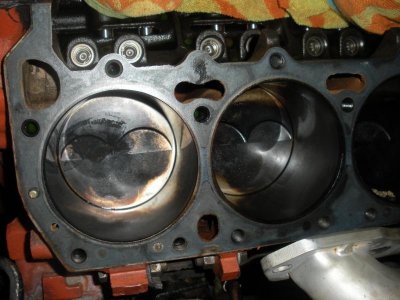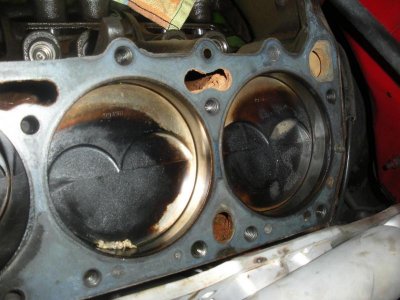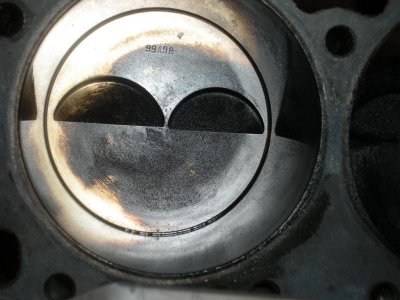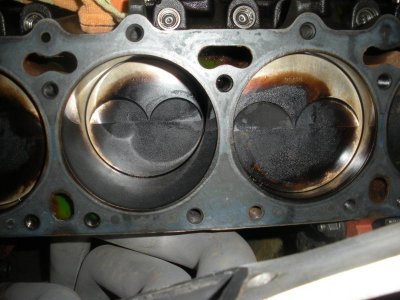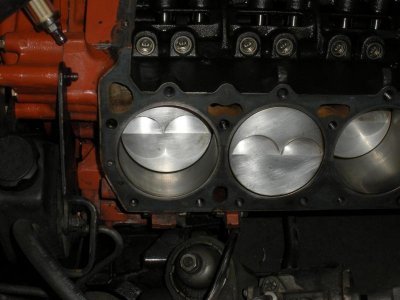Greg, just because I'm curious, how did the original rod break? And, why did it break? You say it broke in the mid of the beam, did a piston seize?
On your current issue, how tight are you running the pistons, how much gap in the rings?
Man, that .030 440 was cursed from the start!
First, it wouldn't fire right away for the break-in. After fixing that, it had low oil pressure. I found a missing galley plug inside the fuel pump/timing cover area....A plug I never knew existed and that the machinist pulled out. After that, it ran great. No damage to the cam or lifters. Oil pressure was fantastic. The #4 rod broke just above the big end. The piston went up and bent the valves, then sunk to about 3/4" below deck. The rod broke in two and the section still on the piston was twisted like a candy cane. I don't know if the big end smacked it causing it to twist or if the rod broke
because it twisted.
Fast forward to 2006. I was out driving the car with this 493 in place. The RH rocker shaft broke, causing 4 lifters to pop out of their bores! The rocker shafts were from the cursed 440.
Regarding my 493 ring gap, I followed the instructions to the exact spec. I was so meticulous, when I accidently over-filed 2 rings, I ordered 2 more and was super careful to get them filed right. I believe they called for .018 for the top rings and .020 for the 2nd ring. I seem to recall the guideline of .0035 for every inch of bore size as a minimum.
- - - Updated - - -
Regarding the late model cars running high compression engines....Sure, give me the sophisticated port fuel injection, knock sensors, engine management computers, a return-type fuel system and a cold air intake and maybe I'd be okay with 10.7 squeeze.
- - - Updated - - -
Greg, you obviously only have one logical solution. B) buy custom gaskets from the link I provided and actually drive your car... I am not saying quench is not important or rod ratio.. They all play a critical part in an engine build, but in this case, the engine is built. Less static/dynamic compression is the only answer now. Quench' won't save a 11:1CR RB on 91 in California.. Maybe a 10.5:1 RB on 91...
I did try clicking on the "Flatout" link. They only showed a .040 MLS gasket. I will look further though. Thank you, Greg.
*************************************************************
I did a wider search and found this:
http://www.summitracing.com/parts/fog-900464520
These are much cheaper than the Cometics, but so far I haven't found any gaskets by "Flatout" to get the compression under 10.0 to one. These have a 4.520 bore and a .064 thickness. It would lower the CR to 10.11 to 1. That is a .62 drop. For $176 per pair, they are tempting. The .075 Cometics are $143 each. They take the CR to 9.89 to 1.
The .060 Cometic I used in 2006 took my CR to 10.29 to 1. It didn't knock then, and that was with the super fast advance curve in it. Maybe all of this will come down to a combination of a lower CR, additional carb tuning and a b it more attention to the advance curve. Heck, if I can get the knock to go away, I'll probably even try using the vacuum advance again!

